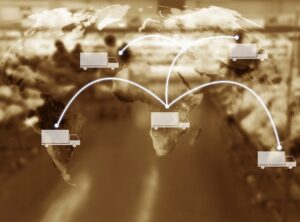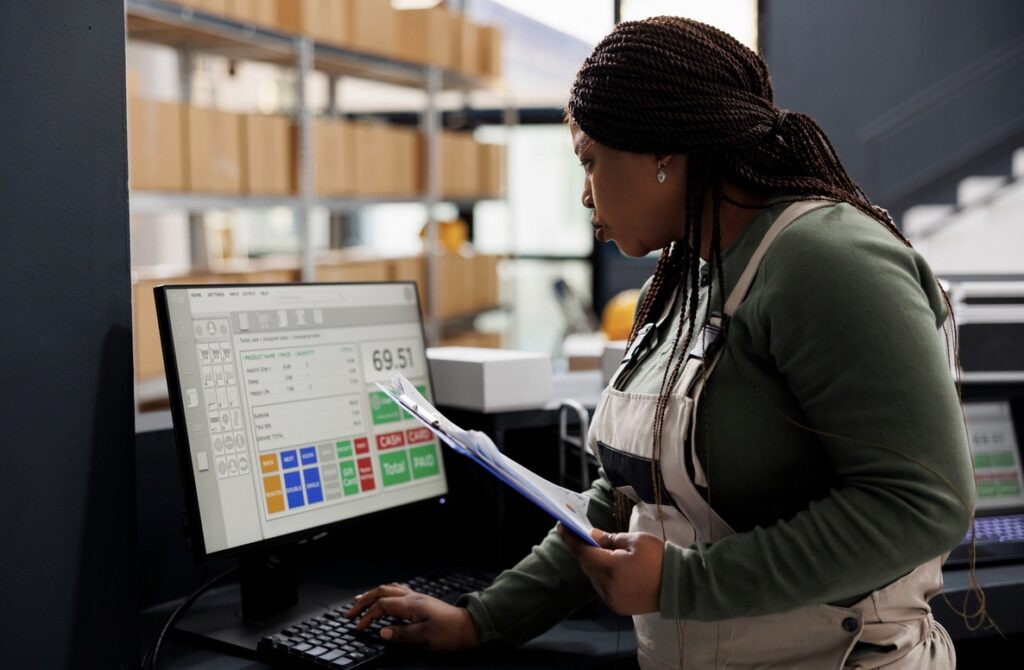Evolution of Supply Chain Technology
In an industry thread like logistics, significant strides have been made in the development of supply chain technology. The evolution, spanning decades, has moved from manual processes to automation, incorporating big data and artificial intelligence (AI) as integral parts of the systems.

The metamorphosis started with breaking away from manual processes that were time-consuming, error-prone and required physical exertion.
The introduction of simple machines and tools provided the groundwork for modern technology to prosper. The early 1900s witnessed the use of first generation mainframe computers in logistics, marking the start of automation.
Current advanced technology, like radio frequency identification (RFID) and barcode systems, play the same role of increasing efficiency and accuracy, but with a much shorter time frame.
Automation has turned repetitive tasks into automated processes. With the uptake of Material Requirements Planning (MRP) and Enterprise Resource Planning (ERP) software, organizations can manage and synchronize their planning, purchasing, inventory, sales, marketing, finance, and human resources in one system. As a result, companies can now handle operations with minimal human intervention, boosting productivity and reducing costs.
The Role of Big Data and AI

Taking a forward leap from automation, incorporation of big data and AI in supply chain management has revolutionized the industry. Big data, referring to sets of digital information too large for traditional data-processing tools to handle, emerged as a powerful tool to analyze massive amounts of data, leading to insightful business decisions. For instance, predictive analytics help organizations forecast potential demands, optimize inventory levels, and create efficient supply routes.
AI sits at the cutting edge of supply chain technology. From chatbots handling customer queries to machine learning algorithms predicting and responding to market trends, AI is proving vital. A report by McKinsey Global Institute indicates AI’s profound impact, showing that it has increased profitability by almost 65% in supply chain firms adopting it in full scale.
Supply Chain Technology Trends
Building on the previous exploration of supply chain technology, it’s essential to spotlight the most prevalent trends shaping this sector. Emerging tech aids in reinforcing and refining established practices, bolstering productivity, and promoting deeper data insights. Two pivotal trends, the Internet of Things (IoT) and blockchain, are at the forefront of today’s supply chain innovation.
IoT and Its Impact on Supply Chains
Internet of Things (IoT) technology now adds valued depth to supply chains, with a global potential economic impact estimated between $3.9 trillion and $11.1 trillion annually by 2025, according to the McKinsey Global Institute. IoT can turn physical assets—vehicles, warehouses, pallets—into digital entities.

These entities relay vital data, like location and temperature, thereby improving asset utilization, enhancing route optimization, and minimizing spoilage.
For example, cold storage transportation can monitor real-time temperature to prevent spoilage, improving customer satisfaction and reducing waste. Being constantly connected, IoT provides companies continuous visibility over their whole supply chain, making real-time adaptive changes possible.
Blockchain for Transparency and Security
Blockchain, originally the backbone of cryptocurrencies, now has profound implications for supply chains. Projections by Gartner suggest that by 2023, blockchain will support global businesses worth over $2 trillion. Blockchain offers a decentralized digital ledger, unchanged once a transaction gets logged. This feature provides unparalleled transparency and security in supply chains, fostering a new level of trust among players. For instance, in the diamond industry, blockchain tracks gems from mine to market, proving their conflict-free origin. Moreover, blockchain can expedite transaction processing and reduce administrative costs. With its promise of a transparent, secure, and efficient supply chain, blockchain technology continues to gain significant traction.
Emerging Technologies in Supply Chain Management
As technology continues its relentless advance, it is driving considerable transformation in the realm of supply chain management.
Advanced Robotics in Warehousing

Robots are no longer science fiction; they’re a reality in warehouses and distribution centers, where they’re revolutionizing the industry. The advanced robotics systems used in warehousing increase productivity, reduce errors, and improve worker safety.
For instance, autonomous mobile robots (AMRs) operate without human intervention, performing tasks like transporting goods, picking products, and even packing orders. These robotic solutions integrate seamlessly with warehouse management systems, utilizing data to optimize processes and operations.
Augmented Reality for Inventory Management
Augmented reality (AR) is another technology poised to change the face of inventory management. AR devices, such as smart glasses, offer hands-free operation that gives employees access to real-time information and assists them in navigating large warehouses. For example, these devices might project an interactive map onto the user’s field of vision, highlighting the most efficient path to an item. Featuring excellent potential for cutting pick times, improving accuracy, and streamlining the inventory process, AR is set to become a staple in supply chain management.

